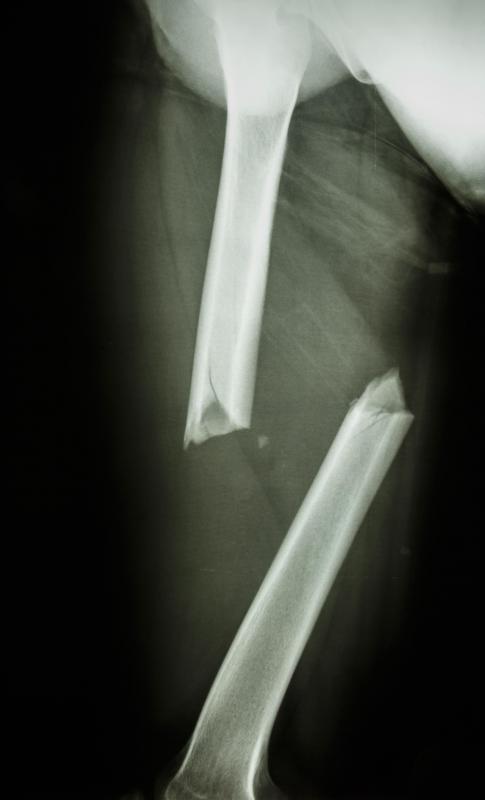At TheHealthBoard, we're committed to delivering accurate, trustworthy information. Our expert-authored content is rigorously fact-checked and sourced from credible authorities. Discover how we uphold the highest standards in providing you with reliable knowledge.
What is Osseointegration?
Osseointegration is a phenomenon in which implanted material integrates with living bone, firmly anchoring the implant in place. This occurrence was first observed in the early 20th century, and doctors realized the implications of osseointegration very quickly. Only certain materials can undergo osseointegration, with titanium being one of the most popular choices for procedures in which osseointegration is the goal. With other materials, the tissue will fail to grow into and around the implant, and it will not anchor.
In this process, the implant is carefully placed in the bone during surgery by an orthopedic surgeon who has fitted the implant to the patient, considering the patient's needs and reviewing x-rays to confirm size and placement of the implant. Over the course of several months, the bone starts to grow into the implant, anchoring the implant in place. Once the implant is installed and the bone has started growing into it, it will be impossible to remove without damaging the bone, and it will be capable of bearing weight.

One of the obvious uses for osseointegration is in the installation of dental implants. The implant can be osseointegrated into the jaw, allowing a dentist to fit a tooth onto the implant. Cosmetic dentistry and reconstructive dentistry can both take advantage of this implant technique. The procedure can also be used to create anchors for prosthetics such as prosthetic limbs, noses, and ears. Prosthetics can be attached more stably and safely with osseointegrated anchors, improving comfort and functionality for the patient.

For prosthetic limbs such as arms and legs, osseointegration has immense potential. One of the biggest problems with attaching prosthetics is finding techniques which will seat an implant firmly on the body without causing pain or limiting freedom of movement. Improper attachments can also render a prosthetic limb largely useless because it cannot bear weight. With osseointegrated prosthetics, these issues can be addressed. It usually takes around six months for the implant to successfully anchor in the bone, at which point fitting for a prosthesis can begin.

Rods used to repair severely broken bones can also be osseointegrated. In these procedures, the rod stabilizes the bone while it heals, and also adds support and structure to protect the bone from being broken again in the future. The progress of healing can be judged by taking x-rays and medical imaging studies of the site to confirm that the bone is growing into the implant and that the bone is growing evenly.
AS FEATURED ON:
AS FEATURED ON:















Discussion Comments
I find it really comforting that this kind of thing is available now. Particularly with dental implants.
I know my father had all kinds of problems with his teeth and jaw. Not only because he had probably not taken as much care of his teeth as he should have, but also because of an accident at the dentist that damaged his jaw.
He never did go and get it fixed properly, but I'm told that if he had it would probably have been done with some osseointegration dental implantation techniques.
It makes me sad that he didn't really have the option available to him, but still I'm glad that people do have that option now.
@umbra21 - I knew someone who had a artificial implant put on her stump in order to provide a setting for an artificial leg. It wasn't quite the same as "though nothing had happened." I know what you mean, but it can still be quite painful for the person who has to walk on it. She said it would also sometimes ache in certain kinds of weather, although she suspected that might be a bit psychosomatic.
Still, she was very happy to have it and never complained. After all, when that wasn't available, the pressure that was put on the skin of her stump was awful, and she would often get pressure sores on there.
When you consider how far prosthetic limbs have come, it's really amazing and a credit to the researchers who have made it possible.
It always makes me think of Forest Gump, when Sargent Dan arrives at the wedding wearing his new legs. I always tear up at a little at that scene. I can only imagine how devastating it must be to lose a limb.
With osseointegration, they make it even more possible for people to walk around on their artificial limbs as though nothing had happened.
Combine that with the advances they are making in robotic limbs and also with nerve control and so forth and it is very exciting.
We really live in a world that seems like a science fiction movie sometimes.
Post your comments